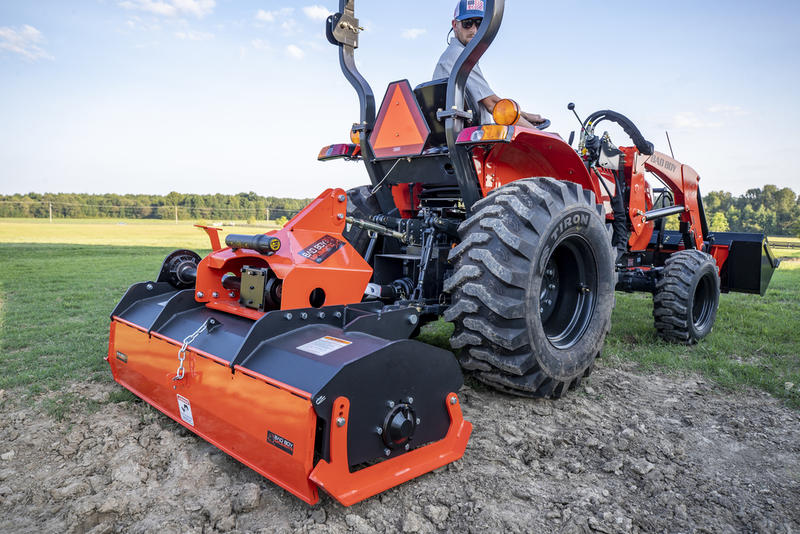When it comes to preparing soil for planting, selecting the right tiller can make all the difference. Whether you’re a homeowner with a large garden or a farmer managing acres of land, your tiller needs to be durable, efficient, and suited to your soil type. Among the growing number of tillers on the market today, the Bad Boy Tiller stands out as a tough, high-performance option—but how does it really compare to other popular tiller brands?
In this article, we’ll take an in-depth look at the features, performance, durability, and overall value of the Bad Boy Tiller in comparison to well-established brands like King Kutter, CountyLine, Land Pride, and Woods. If you’re in the market for a new tiller, this comprehensive guide will help you make a more informed decision.
Overview of the Bad Boy Tiller
Bad Boy is a brand that gained initial recognition in the lawnmower industry for producing rugged zero-turn mowers. Over the years, it has expanded its line to include utility vehicles, tractors, and tillers. The bad boy tiller reflects the same design philosophy: strong, no-nonsense construction paired with practical, performance-oriented features.
Typically available in widths ranging from 50 to 74 inches, the bad boy tiller is designed for compatibility with compact and subcompact tractors through a Category 1 3-point hitch system. These tillers come with heavy-duty gear-driven transmissions, adjustable skid shoes, and a rear deflector for even soil distribution.
Build Quality and Construction
One of the most important aspects of a tiller is its construction quality. The bad boy tiller is built with a focus on rugged durability. It features:
- Heavy-gauge steel housing
- Gear-driven side transmission (not chain-driven)
- A reinforced frame to handle rocky or hard soil conditions
Compared to chain-driven models from brands like CountyLine or King Kutter, the gear-driven transmission in the bad boy tiller offers superior power transfer and longer lifespan. Chain drives are easier to maintain and may be more affordable upfront, but they often require more frequent tensioning and adjustments. In contrast, gear-drive systems, while heavier and pricier, are more efficient under tough workloads.
Winner: Bad Boy Tiller (for long-term durability and gear drive system)
Performance in the Field
Performance metrics often boil down to tilling depth, efficiency in varying soil types, and ease of operation.
The bad boy tiller performs especially well in compacted and clay-heavy soils, largely due to its torque-friendly gear transmission and sharp, heat-treated tines. Its maximum tilling depth is around 6 to 7 inches, which is comparable to most high-end brands like Land Pride and Woods.
In side-by-side tests and customer reviews, users have reported that the bad boy tiller breaks up soil quickly, leaves a fine and consistent seedbed, and handles debris well without frequent clogging. Adjustable skid shoes also allow users to control depth with precision, a feature that’s often missing in cheaper alternatives.
Comparable Brands: Land Pride and Woods offer similar performance but at a higher price point.
Winner: Tie (Bad Boy, Land Pride, and Woods all deliver high-end results)
Ease of Use and Compatibility
One of the selling points of the bad boy tiller is how well it integrates with subcompact and compact tractors. With standard Category 1 hookup and PTO compatibility, it works seamlessly with most tractors in the 20 to 45 HP range.
CountyLine and King Kutter also offer user-friendly models designed for similar tractor sizes. However, some budget models from these brands use lower-quality tines or lack adjustable features like depth control or deflector plates.
The bad boy tiller comes standard with adjustable features that don’t require extra kits or upgrades. Its design also includes a robust PTO shaft and shear pin protection, making it safe and simple to operate for both experienced users and first-time tiller owners.
Winner: Bad Boy Tiller (for better standard features and user-friendliness)
Price and Value
Price is often a deciding factor, especially for small farm operators and property owners. The bad boy tiller tends to fall into the mid-range price category—more expensive than basic chain-drive tillers like those from CountyLine or King Kutter, but more affordable than premium brands like Land Pride or Woods.
For the price, the bad boy tiller delivers a combination of strength, performance, and longevity that’s hard to match. Its all-steel construction and gear drive system alone justify the extra cost over entry-level options.
Price Comparison (approximate, based on 5–6 ft tiller width):
- CountyLine: $1,500 – $1,800
- King Kutter: $1,600 – $1,900
- Bad Boy Tiller: $2,200 – $2,500
- Land Pride: $2,800 – $3,200
- Woods: $2,900 – $3,400
Winner: Bad Boy Tiller (for best value in the mid-range category)
Support, Warranty, and Dealer Network
Bad Boy products are backed by a growing network of certified dealers and service centers, especially throughout the Southern and Midwestern United States. Warranties typically range from one to three years, depending on the component.
Compared to King Kutter and CountyLine (sold primarily through Tractor Supply Co.), Bad Boy’s dealer network offers a more personalized service experience. However, it may not be as expansive as Land Pride or Woods, which have established themselves over decades.
Winner: Tie (Bad Boy and major brands both offer good support, but coverage may vary by location)
Final Verdict
Choosing the right tiller depends on your budget, the type of land you’re working, and the equipment you already own. For buyers who want a machine that offers power, durability, and excellent value, the bad boy tiller is a standout option.
